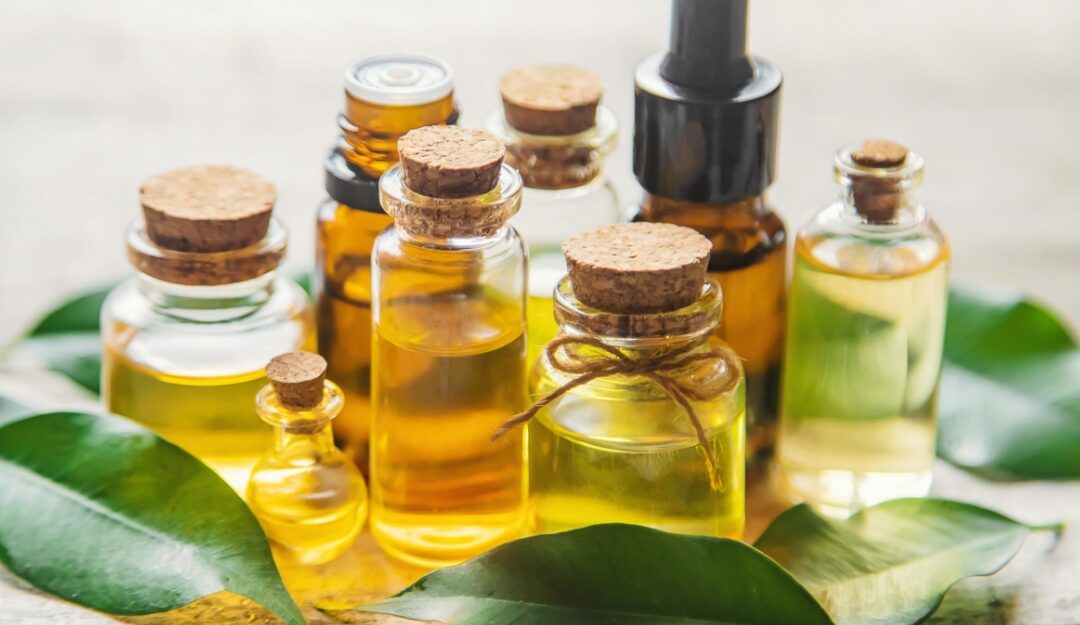Humankind has been always fascinated by fragrance and flavor resulting in hunting aroma from centuries to centuries. Essential oils are aromatic, volatile, and hydrophobic liquids that are easily evaporated at ambient temperature. The name of essential oil is inspired by the essence of plant aroma, it is a plant secondary metabolite obtained from different parts of the plant such as flowers, roots, bark, leaves, seeds, peel, fruits, wood, and whole plants. The essential oil also refers as volatile oils or ethereal oils whatsoever, now these days it has been getting tremendous courtesy among people due to their diversifying applications such as food and flavor, medicine, and cosmetic industries. The definition of essential oil as per ISO 9235:2013 describes as “a product obtained from a natural raw material of plant origin, by steam distillation, by mechanical processes from the epicarp of citrus fruits, or by dry distillation, after separation of the aqueous phase- if any- by physical processes”
Essential oils are the secondary metabolite of plants produces for various purposes such as acting as a defense mechanism from bacterial-fungal attack, Insect attack, adverse environmental stress, and simultaneously also attract pollinators. These are the main causes of plant synthesis the complex organic compound protect themselves which are the best natural gift for humans.
The chemical composition of essential oils is highly functionalized diversified chemical compounds such as monoterpenoids, sesquiterpenoids, phenylpropanoids, allyl, and isoallyl phenols, aldehydes, ketones esters, lactones, coumarins, ethers, oxides, etc., there is not having any fatty acids composition in the essential oil. At present, 3000 different essential oils have been reported but only 300 essential oils are used in flavoring and fragrances, food, and pharmaceutical industries1.
The extraction of essential oil performs several methods it depends on the nature of compound or plant materials, such as azeotropic distillation, hydrodistillation (HD), steam distillation (SD), turbohydrodistillation (THD), ultrasound-assisted extraction (US-SD), microwave steam distillation (MSD), In situ microwave-generated hydrodistillation (ISMH) and solvent extraction2.
In the present scenario, increasing demand in the market, high economic value, more profit, customer burgeoning, and low production rate cause favorable conditions for adulteration. Essential oil estimated annual sales of approximately $7 billion to increase by 11.5% in 2022 and in this respect, India is the largest producer with 40% of essential oils in the world. 15% water adulterant is used in essential oil while another synthetic adulterant is also used for earning more profit. The most contribution of adulterants in essential oil is found to be in sandalwood oil, lavender oil, Rose oil, Cannabis flower oil, Citrus oils, wintergreen oil, peppermint oil, etc. In addition, another situation of essential oils are addressed by the ISO standard which mentions that it must be consideration of natural variation in essential oils due to climate, geography, and altitude influences. Therefore, several national and international regulatory bodies are strictly monitoring the quality control of essential oils.
Adulteration can be traced with help of GC-MS, GC-FID, GC-IRMS, 13C NMR, HPLC, and TLC or organoleptic analysis of essential oil. Most of cases water are used as an adulterant in essential oils which can’t be observed by the naked eye but at low freezing temperature can be identified as the formation of ice crystallization. The authenticity of essential oil can be identified with various techniques such as enantiomeric analyses can be used for differentiating natural compounds from the synthetic origin, and orthogonal methods using 2H-ERETIC-NMR technique.
Use of essential oils
Essential oil is one of the greatest natural gifts to human beings and has diversified applications in lifestyle. It has a wide range of applications in the food industries, cosmetic industries, and pharmaceutical industries. Essential oils have unique properties to make them special products such as antibacterial properties such as eucalyptus, lemongrass oil, antioxidant activity such as Ningxia Wolfberries oil, insect repellent as Citronella oil, Rosemary oil use for improving brain function, reducing pain and stress. It is also used as a preservative for increasing the self-life of packaging food and food products. Frankincense oil is best known as the king of oil used for anti-inflammation, improving mood, and sleep.
Requirement for shape a brand name of your products:
The product quality and claiming to give an empowered to make a sense of the first brand name, during this journey we are committed to excellent testing services for giving a world-class intended to your essential oils and its products under one roof multiple testing solutions. Our state-of-the-art laboratory with the cutting-edge instruments and the latest methodology to relay a customize testing solution as per the client’s requirements and comply with regulatory bodies. Our scientific community to deals optimistic laboratory testing portfolio and provide genuine testing, and transparency with minimum TAT for your product requirements which helps make on time your products to qualify all compliances to national or international regulatory bodies.
Author – Brij K. Vijaya and Sanjoy Gupta
References: –

